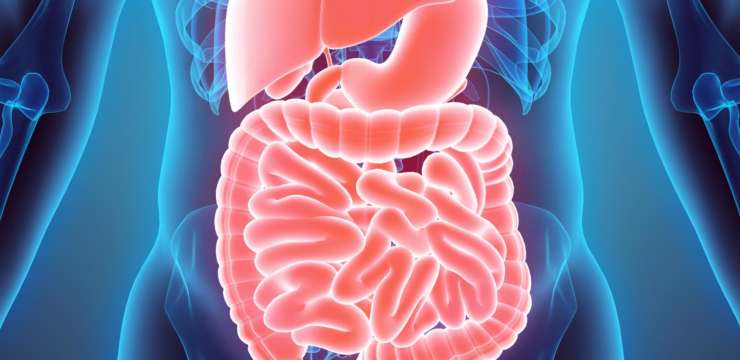
Chiropractic care can help manage migraines and head injuries. Discover its benefits for improved health and comfort.
Table of Contents
Understanding Traumatic Brain Injury (TBI): Headaches, Migraines, and Paths to Relief
A traumatic brain injury (TBI) occurs when the brain is damaged by a violent blow or shock to the head. Falls, auto accidents, sports mishaps, and other incidents may cause this. TBI alters the way the brain functions and may cause a variety of symptoms, such as migraines and headaches. One of the most prevalent issues after a TBI is headaches. Although they may make day-to-day living difficult, there are strategies to understand and manage them.
Post-traumatic headaches (PTH) are headaches that occur after a severe brain injury. They usually begin seven days after the injury or when an unconscious individual regains consciousness. A headache is considered acute if it lasts for less than three months. It is deemed chronic or persistent if it persists for an extended period. These headaches are more common in those with moderate TBI, such as concussions, than in those with severe TBI.
What Is Traumatic Brain Injury?
TBI is not just one type of injury. It can be mild, moderate, or severe. Mild TBI, often called a concussion, means a short change in brain function, like feeling dazed or losing consciousness for less than 30 minutes. Moderate or severe TBI can cause longer unconsciousness, memory loss, or visible brain damage on scans. The brain is injured in two ways during a TBI. First, the direct impact causes bruising or bleeding. Second, the brain shakes inside the skull, stretching or tearing nerve fibers. This is called diffuse axonal injury. These changes release chemicals that inflame the brain and disrupt normal signals. Common causes include motor vehicle accidents (MVAs), falls, sports injuries, work accidents, and assaults. Anyone can get TBI, but it is more common in young adults, older people, and men.
How TBI Causes Headaches and Migraines
Headaches after TBI happen because the injury affects pain pathways in the brain and neck. When the head gets hit, it can strain neck muscles and joints. This is common in whiplash from car crashes. Neck problems send pain signals to the head. Inside the brain, TBI causes swelling and changes in blood flow. Chemicals like glutamate build up, exciting nerves too much. This leads to cortical spreading depression, a wave of activity that triggers migraine-like pain. The trigeminal nerve, which senses pain in the face and head, becomes overactive.
Inflammation plays a big role. After TBI, the brain releases cytokines that increase pain sensitivity. This is why post-traumatic headaches often feel like migraines or tension headaches. Migraines linked to TBI are called post-traumatic migraines. They share the same brain changes as regular migraines but start after an injury. People with a family history of migraines are more likely to get them after TBI.
Types of Headaches and Migraines After TBI
Post-traumatic headaches come in different forms. The most common types are:
- Migraine-like headaches: These cause throbbing pain, often on one side. They are accompanied by nausea, vomiting, sensitivity to light (photophobia), sound (phonophobia), or odors. Movement makes them worse. Some individuals experience an aura, characterized by seeing flashing lights before the pain begins.
- Tension-type headaches: These feel like a tight band around the head. The pain is dull and pressing. They often start in the neck and spread forward.
- Cervicogenic headaches: Pain begins in the neck from injured joints or muscles. Turning the head or maintaining poor posture can exacerbate it.
- Cluster-like headaches: Rare, but very intense pain around one eye. The eye may water or redden.
- Mixed or other types: Many people have overlapping symptoms, like migraine features with tension pain.
Over 50% of post-traumatic headaches act like migraines. They can change over time, starting as one type and becoming another.
Symptoms of Headaches and Migraines from TBI
Headache pain varies. It can be mild or severe, and may occur constantly or in attacks. Common signs include:
- Throbbing or pulsing in the head
- Pain is worse with bright lights, loud noises, or strong smells
- Nausea or vomiting
- Dizziness or balance problems
- Fatigue
- Trouble sleeping
Migraines can last anywhere from 4 to 72 hours if left untreated. They can happen daily in chronic cases.
How TBI Affects Cognitive Function and Head Symptoms
TBI damages areas that control thinking. This leads to cognitive symptoms like:
- Trouble concentrating
- Memory problems
- Slower thinking
- Difficulty making decisions
These issues often come with a headache. Headaches make it harder to focus, creating a cycle. Severe TBI causes more cognitive problems, plus headaches. Allodynia is common – even normal touch, such as brushing hair, can be painful. This shows the pain system is overly sensitive after TBI.
Sensory Symptoms from TBI: Migraines Affecting the Head and Neck
Migraines after TBI heighten senses. Light, sound, and smells trigger or worsen pain. This is hypersensitivity. Neck symptoms are key. Stiff neck, pain when moving, or tenderness linked to headaches. Whiplash in MVAs often causes this. Neck issues refer pain to the head. Vertigo or dizziness can occur, causing the head to feel as if it is spinning. Blurred vision or ringing in the ears (tinnitus) adds to discomfort.
What Are Migraines? Causes and Symptoms
Migraines are neurological attacks with intense head pain. They occur in phases: prodrome (warning signs, such as yawning), aura (visual changes), headache, and postdrome (feeling drained). Causes include genetics, brain chemical imbalances, and triggers such as stress, certain foods, or hormonal fluctuations. In TBI, the injury can start or worsen migraines by altering brain pathways. Symptoms: One-sided throbbing, nausea, sensitivity to stimuli, and aura in some. Attacks disrupt life. TBI correlates strongly with migraines. Studies show a higher risk after injury, especially mild TBI.
Dr. Alexander Jimenez’s Clinical Insights on TBI and Headaches
In El Paso, Texas, Dr. Alexander Jimenez, DC, APRN, FNP-BC, operates a clinic specializing in injury care. With dual licenses as a chiropractor and nurse practitioner, he uses a dual-scope approach. This means combining chiropractic adjustments with medical diagnosis for full care. Dr. Jimenez sees many patients with TBI from MVAs, work injuries, sports, and personal accidents. He notes headaches and migraines often stem from neck misalignment (subluxation) and soft tissue damage. Whiplash links neck pain to head pain. His observations: Post-concussion symptoms include cognitive fog, sensory issues, and chronic migraines. Root causes involve spinal issues, inflammation, and lifestyle factors.
Diagnostic Assessments and Imaging
Dr. Jimenez utilizes advanced tools, such as digital motion X-rays, to assess neck and spine movement. Nerve tests check for damage. Metabolic and genetic assessments find hidden causes. This neuromusculoskeletal imaging helps correlate injuries. For example, a herniated disc from an MVA can press nerves, causing migraines.
Treatment Procedures at the Clinic
The clinic treats without surgery or heavy drugs. Chiropractic adjustments realign the spine, reducing nerve pressure. Spinal decompression eases disc problems. Massage therapy relaxes tight muscles in the head and neck. Acupuncture targets pain points and promotes healing. Targeted exercises build strength and flexibility. Nutrition plans reduce inflammation. For MVAs and work-related injuries, the clinic manages medical records for legal purposes. This supports claims while focusing on recovery.
A Questionnaire Example for TBI Symptoms
How Chiropractic and Integrative Medicine Help
Chiropractic fixes the cause, not just symptoms. Adjustments restore balance, easing headaches naturally. Integrative medicine combines therapies. Acupuncture boosts endorphins for pain relief. Massage improves blood flow. Exercise prevents long-term issues like chronic pain. Patients learn stretches to relieve neck and head pain. This approach promotes natural healing. The body recovers better without relying on pills that can cause overuse headaches. Dr. Jimenez’s patients report less pain and better function. One example: After a car accident, consistent care reduced migraines and improved daily life.
Preventing Long-Term Problems
Early treatment stops acute headaches from becoming chronic. Lifestyle changes help: good sleep, stress management, and healthy eating. Regular check-ups catch issues. The clinic offers wellness plans for ongoing health.
Chiropractic Care for Healing After Trauma- Video
Living Better After TBI
Every day of life may be completely upended by traumatic brain injury. You may experience loss of energy and happiness due to headaches, migraines, neck discomfort, hazy thinking, and sensitivity to light and sound. Here’s the thing, though: these symptoms are not permanent. Many individuals reclaim the life they thought was lost, and most people experience noticeable improvements with the right knowledge and attention. Not simply masking the discomfort, but tackling the underlying reasons is crucial. Dr. Alexander Jimenez demonstrates daily in his El Paso clinic how a combination of focused exercise, massage therapy, acupuncture, chiropractic adjustments, and modern diagnostics can produce long-lasting improvements. Patients who previously suffered from regular headaches due to auto accidents or sports injuries now report stronger necks that no longer cause discomfort, better thinking, and fewer headache days. They work better, get more sleep, and spend more time with their loved ones (Jimenez, n.d.).
The goal of recovery is not to wait for everything to become better. Providing your brain and body with the proper support at the right moment is key. Prompt treatment prevents acute headaches from developing into chronic ones. Natural remedies help eliminate inflammation, reestablish healthy nerve impulses, and rebuild strength without the risk of headaches associated with prescription medications. It’s not enough for you to get by. Mornings free of fear, afternoons free of hiding from light, and nights free of fatigue are all things you deserve. It’s never too late to begin the healing process, regardless of how long ago your injury occurred in the past. Make the first move now. See a holistic practitioner, like as Dr. Jimenez and his colleagues, who link your neck, spine, and brain problems with dual-scope therapy. Results are huge when little adjustments are made consistently. We can find relief. Waiting is a more complete, pain-free existence.
References
- Centers for Disease Control and Prevention. (2025). Symptoms of mild TBI and concussion. www.cdc.gov/traumatic-brain-injury/signs-symptoms/index.html
- Cleveland Clinic. (2016). Traumatic brain injury (TBI). my.clevelandclinic.org/health/diseases/8874-traumatic-brain-injury
- Jimenez, A. (n.d.). Injury specialists. www.dralexjimenez.com/
- Jimenez, A. (n.d.). LinkedIn profile. www.linkedin.com/in/dralexjimenez/
- Larsen, E. L., et al. (2021). Mild traumatic brain injury affects the features of migraine. pmc.ncbi.nlm.nih.gov/articles/PMC8296591/
- Mayo Clinic. (2021). Traumatic brain injury. www.mayoclinic.org/diseases-conditions/traumatic-brain-injury/symptoms-causes/syc-20378557
- National Institute of Neurological Disorders and Stroke. (n.d.). Traumatic brain injury (TBI). www.ninds.nih.gov/health-information/disorders/traumatic-brain-injury-tbi
- Seifert, T. D. (2015). Detecting migraine in patients with mild traumatic brain injury. pmc.ncbi.nlm.nih.gov/articles/PMC4461723/
- Stacey, A., et al. (2023). Posttraumatic headache. www.ncbi.nlm.nih.gov/books/NBK556134/
- TheraSpecs. (n.d.). 5 types of chronic headaches and migraines after TBI. www.theraspecs.com/blog/chronic-headaches-and-migraines-after-tbi/
- Yung, C. Y., et al. (2023). Risk of migraine after traumatic brain injury. pmc.ncbi.nlm.nih.gov/articles/PMC9959615/
Disclaimers
Professional Scope of Practice *
The information herein on "Head Injury Solutions for Migraines Using Chiropractic Care" is not intended to replace a one-on-one relationship with a qualified health care professional or licensed physician and is not medical advice. We encourage you to make healthcare decisions based on your research and partnership with a qualified healthcare professional.
Blog Information & Scope Discussions
Welcome to El Paso's wellness blog, where Dr. Alex Jimenez, DC, FNP-C, a board-certified Family Practice Nurse Practitioner (FNP-C) and Chiropractor (DC), presents insights on how our team is dedicated to holistic healing and personalized care. Our practice aligns with evidence-based treatment protocols inspired by integrative medicine principles, similar to those found on dralexjimenez.com, focusing on restoring health naturally for patients of all ages.
Our areas of chiropractic practice include Wellness & Nutrition, Chronic Pain, Personal Injury, Auto Accident Care, Work Injuries, Back Injury, Low Back Pain, Neck Pain, Migraine Headaches, Sports Injuries, Severe Sciatica, Scoliosis, Complex Herniated Discs, Fibromyalgia, Chronic Pain, Complex Injuries, Stress Management, Functional Medicine Treatments, and in-scope care protocols.
Our information scope is limited to chiropractic, musculoskeletal, physical medicine, wellness, contributing etiological viscerosomatic disturbances within clinical presentations, associated somato-visceral reflex clinical dynamics, subluxation complexes, sensitive health issues, and functional medicine articles, topics, and discussions.
We provide and present clinical collaboration with specialists from various disciplines. Each specialist is governed by their professional scope of practice and their jurisdiction of licensure. We use functional health & wellness protocols to treat and support care for the injuries or disorders of the musculoskeletal system.
Our videos, posts, topics, subjects, and insights cover clinical matters, issues, and topics that relate to and directly or indirectly support our clinical scope of practice.*
Our office has reasonably attempted to provide supportive citations and has identified the relevant research studies or studies supporting our posts. We provide copies of supporting research studies available to regulatory boards and the public upon request.
We understand that we cover matters that require an additional explanation of how they may assist in a particular care plan or treatment protocol; therefore, to discuss the subject matter above further, please feel free to ask Dr. Alex Jimenez, DC, APRN, FNP-BC, or contact us at 915-850-0900.
We are here to help you and your family.
Blessings
Dr. Alex Jimenez DC, MSACP, APRN, FNP-BC*, CCST, IFMCP, CFMP, ATN
email: coach@elpasofunctionalmedicine.com
Licensed as a Doctor of Chiropractic (DC) in Texas & New Mexico*
Texas DC License # TX5807
New Mexico DC License # NM-DC2182
Licensed as a Registered Nurse (RN*) in Texas & Multistate
Texas RN License # 1191402
ANCC FNP-BC: Board Certified Nurse Practitioner*
Compact Status: Multi-State License: Authorized to Practice in 40 States*
Graduate with Honors: ICHS: MSN-FNP (Family Nurse Practitioner Program)
Degree Granted. Master's in Family Practice MSN Diploma (Cum Laude)
Dr. Alex Jimenez, DC, APRN, FNP-BC*, CFMP, IFMCP, ATN, CCST
My Digital Business Card







